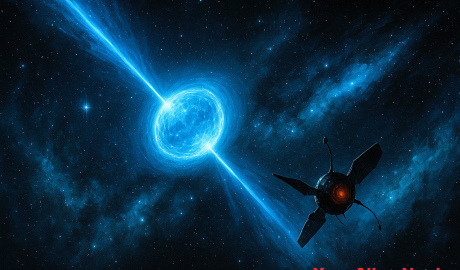Spider Pulsars and Alien Signals: Beacons in the Galactic Web?
2025-09-01
In the vastness of space, not all stars go quietly into the night. Some die spectacular deaths, becoming pulsars — dense, rapidly spinning neutron stars emitting electromagnetic radiation beams with uncanny regularity. These cosmic lighthouses are some of the most extreme objects in the universe, ticking away with millisecond precision.Continue Reading


